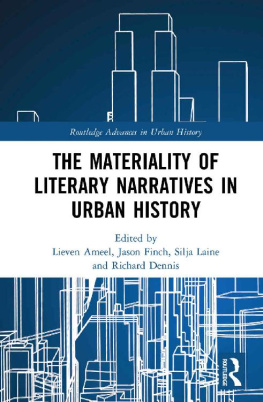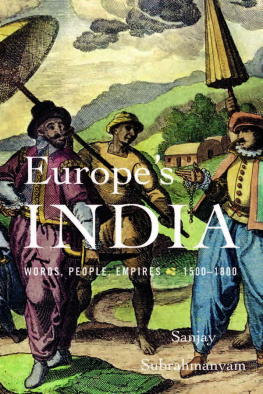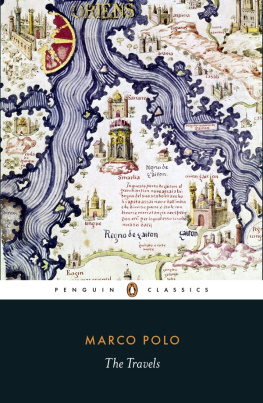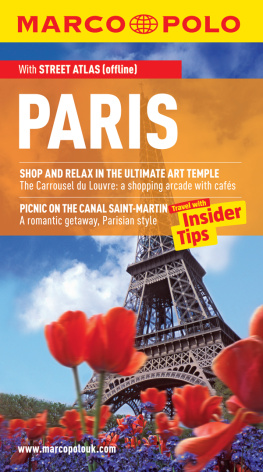
The Constructions of the East in Western Travel Narratives, 1200 CE to 1800 CE
This book investigates how the idea of the east emerged in western travel narratives between the 13th and the 18th centuries. Sifting through critical travel narratives real and imagined it locates the changing geography as well as the perceptions surrounding India. The author presents how historical stereotypes interacted with a burgeoning demand for travelogues during this period and have fed into the way we think about Asia in general, and India in particular. From the mythical travels of Prester John to the enigmatic adventures of Marco Polo, from the fraught voyages of Johannes Plano de Carpini to the missionary zeal of Friar Odoric of Pordenone and William of Rubruquis, this volume traces the history of the Orient as it was understood by the west.
A major intervention in understanding how popular narratives shape history, this book will be of great interest to scholars and researchers of history, medieval history, history of travel, world literature, postcolonial studies, and general readers interested in travel narratives.
Radhika Seshan retired as Professor and Head, Department of History, Savitribai Phule Pune University (formerly University of Pune), India in July 2019, and is now Visiting Professor at the Symbiosis School of Liberal Arts, Pune. She has several publications including Trade and Politics on the Coromandel Coast: Seventeenth to Early Eighteenth Centuries (2012) and Ideas and Institutions in Medieval India: Eighth to Eighteenth Centuries (2013), as well as various edited volumes.
First published 2020
by Routledge
2 Park Square, Milton Park, Abingdon, Oxon OX14 4RN
and by Routledge
52 Vanderbilt Avenue, New York, NY 10017
Routledge is an imprint of the Taylor & Francis Group, an informa business
2020 Radhika Seshan
The right of Radhika Seshan to be identified as author of this work has been asserted by her in accordance with sections 77 and 78 of the Copyright, Designs and Patents Act 1988.
All rights reserved. No part of this book may be reprinted or reproduced or utilised in any form or by any electronic, mechanical, or other means, now known or hereafter invented, including photocopying and recording, or in any information storage or retrieval system, without permission in writing from the publishers.
Trademark notice: Product or corporate names may be trademarks or registered trademarks, and are used only for identification and explanation without intent to infringe.
British Library Cataloguing-in-Publication Data
A catalogue record for this book is available from the British Library
Library of Congress Cataloging-in-Publication Data
A catalog record for this book has been requested
ISBN: 978-1-138-36741-8 (hbk)
ISBN: 978-0-367-80915-7 (ebk)
Typeset in Sabon
by Apex CoVantage, LLC
For my family
This book has taken an inordinately long time to complete, for I first began work on it over ten years ago. It has been an ambitious project, and has involved many people, as well as a great deal of reading (which last was fun but having to organise my ideas was not!).
As always, thanks are due to many people. My daughters, Nisha and Varsha, have regularly been roped in as editors and as audience, as well as sounding boards as and when required. The last version was read through by Varsha, who pointed out the inconsistencies of both argument and tense and made sure I explained things more coherently. My sister, who came to visit me, was also roped in to read and tell me if what I had written made sense. My cousin told me that she got stuck on the first sentence and made sure I changed it. Shweta, as always, has been audience, sounding board, and tech expert.
And thanks to my friends, who asked me at regular intervals how long I was going to sit on the book without publishing it.
Radhika Seshan
It is accounted a romantic thing to wander among strangers and to eat their bread by the camp-fires of the other half of the world. Wandering in itself is merely a form of self-indulgence. If it adds not to the stock of human knowledge, or if it gives not to others the imaginative possession of some part of the world, it is a pernicious habit. It is only the wonderful traveller who sees a wonder, and only five travellers in the worlds history have seen wonders. The others have seen birds and beasts, rivers and wastes, the earth and the (local) fulness thereof.
So declared the Introduction to The Travels of Marco Polo , in the version that was printed in English in 1818.
For anything to which a man is accustomed long, commonly grows unpleasant; whereas Variety delights him, and rescues his imagination from the tediousness of ordinary Objects. Hence is the desire men have naturally to Travaile: and though it withdraws one from his relations and country, and exposeth him to several incommodities and perils, yet the pleasure of his Voiage preponderates all apprehensions, and renders all discouragements contemptible and vain. And as there is Pleasure in Travailing, so it hath in my judgement its Utility likewise, and its Profit as well as Diversion.
Guy Mige, a Frenchman who accompanied the Earl of Carlisle on a diplomatic mission to the court of the Tsar in 1663.
A common feature of todays world is the ubiquitous map on phones, tablets, etc. The map gives you directions from place a to place b, in the shortest possible time, and by the route which has the least traffic. But what about the world in which such devices did not exist? How did people learn about other places, perhaps located not so far away? Were these worlds real or imagined? Who went there? And how? And what did they see there? These are the questions that have resulted in travel narratives of many kinds the travellers tale. Tales of travel could take an individual anywhere he or she wanted, in imagination, but he or she needed first to have something to grasp, which had to come through the story of someone who had been there, done that.
Travel has always fascinated humans. Whether this is a genetic inheritance from the days of the nomads, or a later development from the days of more settled life, when travel was (perhaps) a way to escape the tedium of daily life, or just a desire to impress ones fellow men with ones worldly wisdom and knowledge, the fact is that travel has always been a major part of human experience. This fascination has found expression in storytelling and later in writing of all kinds. These stories could be real or imaginary and could be understood as either; but crucial to the telling of the tale is the need to make it in some sense identifiable. A tale has to have a location, and that location has to be believable, and perhaps, at a later stage, verifiable.
Storytelling is of different kinds, in both prose and poetry. This would include mythologies, oral narratives which often collapse time and space (or on the other hand locate them very firmly), stories in India.
The reverse can also be said to hold good, for as Romila Thapar has pointed out, the retelling of a story also provides information about the context of a particular way of retelling. In other words, the story has multiple temporal and spatial locations. We can also see travel literature in this fashion for, transcending time and space, these stories continue to be read. What is read into the narrative would then belong to a different time and a different context from the one in which it was written. It is in this sense that this book deals with travel accounts.










